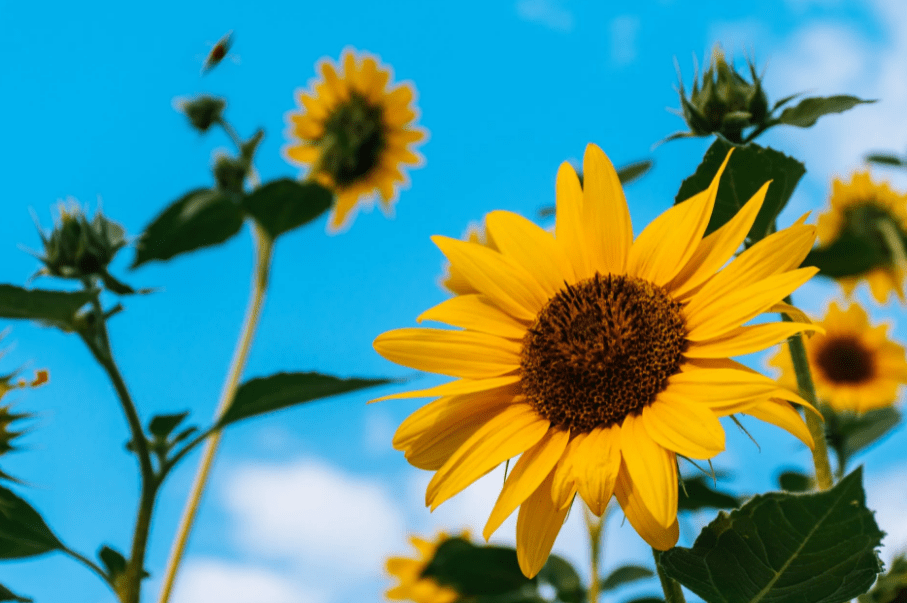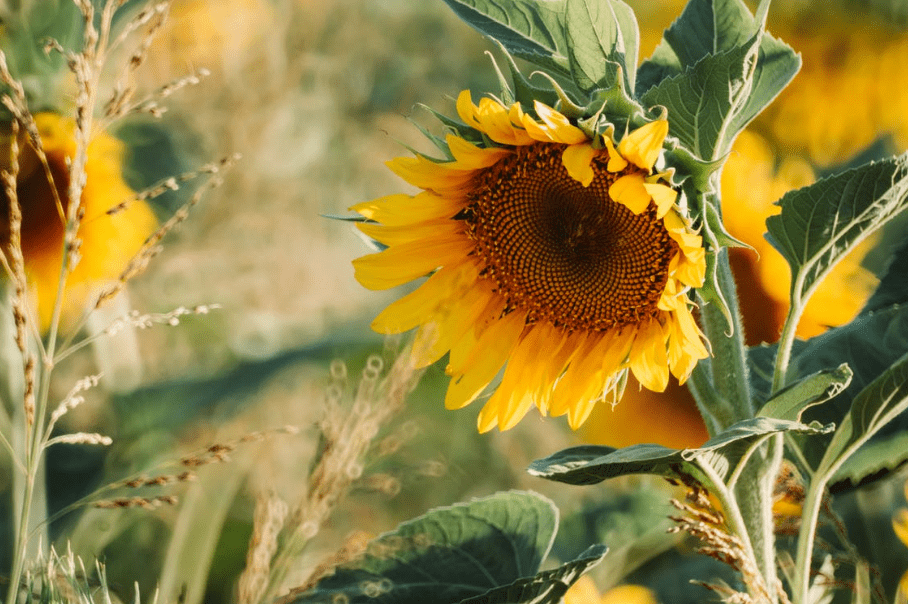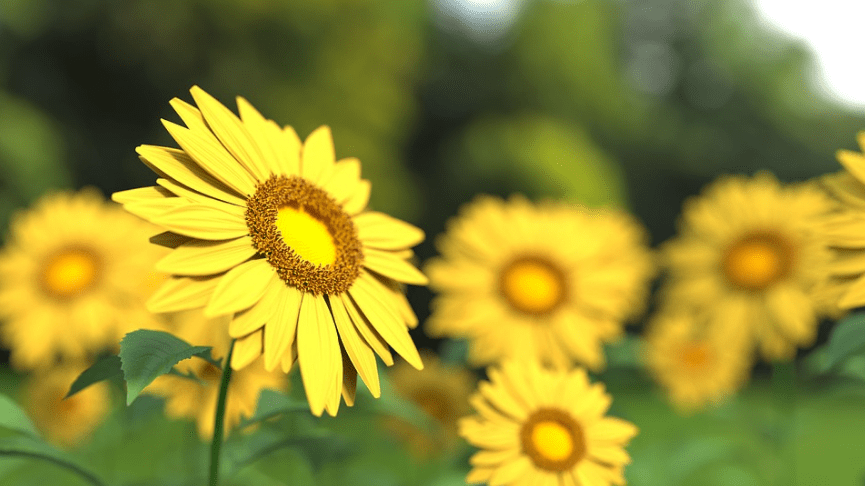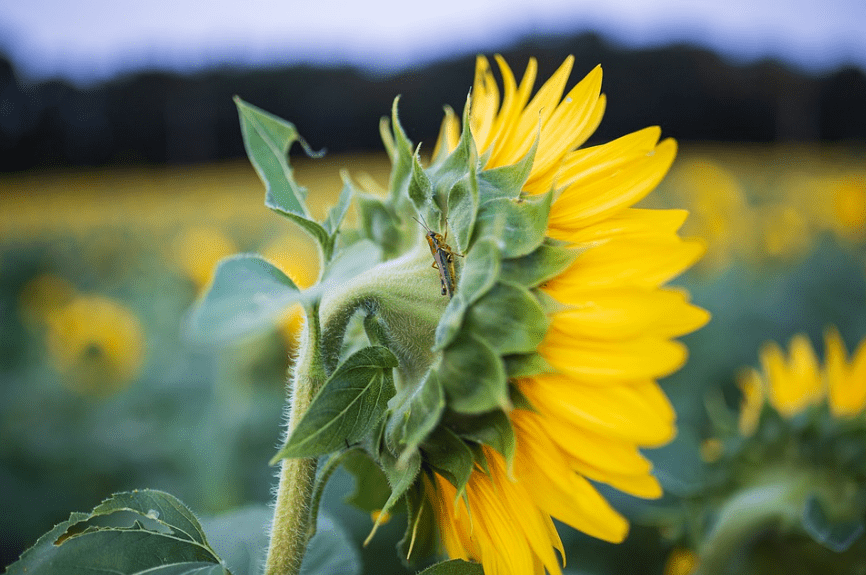Many of us have heard that sunflowers follow the direction of the sun. But is this actually true? The short answer is “Yes.” Sunflowers have fascinated not only artists but also scientists around the globe. Not only do they look beautiful they also exhibit a curious ability that scientists are trying to understand more clearly. This ability is the capability of sunflowers to follow the sun’s movement across the sky throughout the day and turn back around during the night, facing east in anticipation of the next sunrise.
Scientists have researched this phenomenon and have made many interesting discoveries. Let’s discuss why and how sunflowers follow the sun’s direction.
So, Do Sunflowers Follow the Sun?
You most likely have heard that sunflowers always face the sun, but is this statement true? The answer is that it is not true. Statements such as “a sunflower always faces the sun” imply that the plant faces the sun not only when it is young but also when it has matured, which is not true. Sunflowers move so that their bloom follows the sun’s movement across the sky, but this is only the case when the plant is young. Once the plant has matured, the bloom stops following the sun’s movement across the sky and instead just faces east.
One hypothesis for why the young blooms of sunflowers follow the sun’s movement across the sky is that it helps maximize photosynthesis. The flower head of a sunflower exhibits heliotropism most prominently. When these flower heads are young, they have green bracts, and the leaves are present beneath the flower heads. So, when the flower head moves and follows the sun’s movement, it maximizes photosynthesis.
This hypothesis is supported by the fact that the biomass and left area of sunflowers is decreased if they are moved so that they are facing away from the sun or tied in a way that they cannot move, stopping the blooms from following the sun.
Before proceeding, let’s discuss what heliotropism and circadian rhythm are.
Heliotropism
Basically, the motion of plants in response to the sun is known as heliotropism. This sun-tracking motion of plants such as sunflower allows them to gain the optimal amount of sunshine. Many plants utilize heliotropism, but in sunflowers, it can be observed much more easily. Plants, such as sunflower, exhibit heliotropic movement even on cloudy days with no direct sunlight. This indicates that the plant has a learned pattern that it follows in its movements and shows how they are much more alive and complex than we usually think them to be.
Circadian Rhythm
Circadian rhythm is a sort of internal biological clock present in many animals and plants, which follows a cycle of around twenty-four hours. This internal clock is also present in human beings.
This circadian rhythm in plants allows them to anticipate environmental cues such as light or temperature and plays an important role in the proper growth and fitness of a plant.
The Cycle
Young sunflower blooms usually have a full cycle that they follow every day. The cycle starts at dawn, with the young bloom facing east. This means when the sun rises, the bloom is already facing it. Then the bloom slowly turns west, following the sun’s movement throughout the day until the sun has set. During the night, the bloom turns back from west to east in anticipation of the next sunrise, and so the cycle continues.
How Do Sunflowers Turn?
According to researchers, a sunflower achieves movement by increasing growth in different sides of its stem during the day and the night. A sunflower turns its bloom to track the sun, across the sky, by increasing the growth in the east side of the stem during the day. This means that the east side of the stem grows faster than the west side during the day allowing the bloom to turn from east to west. But during the night, the west side of the stem grows faster than the east side, allowing the bloom to turn from west to east.
This cycle of alternate increase in growth in the stem’s sides allows the bloom to follow the sun during the day and turn back, and face east again during the night.
The researchers hypothesized that sunflowers feature two growth mechanisms. One growth mechanism is responsible for setting the basic rate of growth for the plant, and the other causes increased growth in one side of the stem, allowing it to grow at a faster pace than the other side resulting in the bloom turning from east to west during the day.
This second growth mechanism that causes the increase in growth in one side of the stem is controlled by the circadian clock and is influenced by the direction of light.
Why Do Mature Flowers Stop Following the Sun’s Movement?
Once a sunflower plant has matured, heliotropism also stops. Now you might be wondering why sunflowers stop heliotropism once they have grown. Matured sunflowers do not follow the sun’s movement across the sky; instead, they face east throughout the day. As sunflowers mature, their growth starts to slow down. Their circadian clock reacts with more intensity during the early morning compared to later through the day. Due to this, the flower eventually stops tracking the sun and just faces east.
One hypothesis states that heliotropism stops in mature sunflowers to attract more pollinating insects. Sunflowers that are facing east heat up much faster than the ones that are not facing east. The reason this is relevant is that pollinating insects such as bees prefer warmer flowers.
Sunflowers usually only have a single flower which means the plant needs to make its flower as attractive to pollinating insects as it can. If the flower’s head is facing east, it would warm much faster and attract more pollinating insects.
Conclusion
According to researchers, sunflower plants facing east attract five times more pollinating insects than those facing west. This means that the mature flowers facing east have a much higher chance of reproducing.





